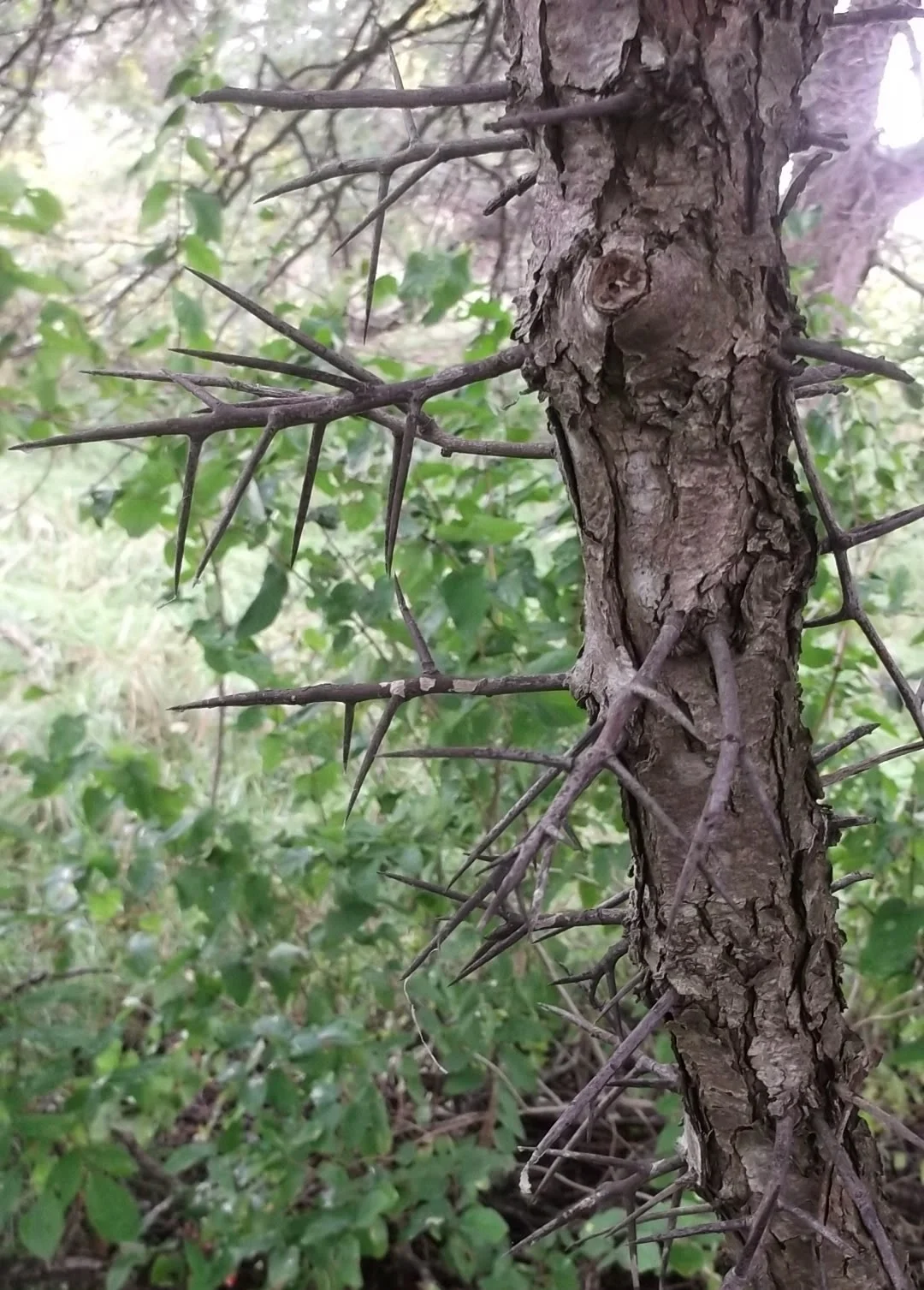 |
| Hard mast collected on-property Oct 4, 2014. Click on picture to enlarge or down-load and really enzoomenfy. |
English Oak (Quercus robur): The oak of Robin Hood, French wine casks and the truss-work holding up the Louvre. The tree grows quickly and bears abundantly. A member of the "White oak" side of the family. Susceptible to leaf mildews and, supposedly, borers. These long, slender acorns at at the "one-o'clock" position on the plate.
 |
| The cap of these acorns reminds me of the hair on Michelangelo's David. |
Sawtooth Oak (Quercus acutissima): The James Dean of oak trees, "Live hard, die young and leave a good looking corpse." One of the darlings of Landscaping for Wildlife. Excellent article by Lindsay Thomas HERE. These acorns are at the three o'clock position on the plate. Q. acutissima is the authentic acorn to use when making Dotorimuk, Korean Acorn Pudding.
Dotorimuk was widely eaten in Korea during the Korean War, when millions of people were displaced and starving. However, in recent years it has been rediscovered as a health food.
 |
| The frosty appearance of these acorns is typical of Red Oaks. |
Northern Red Oak (Quercus rubra): These acorns are at the five o'clock position on the plate. This acorn was preferred by Native Americans over "White Oak" acorns for three reasons:
- They had better keeping properties, thus they were edible at the end of winter when starvation was most severe
- They were easier to collect in massive amounts. Prime stands of Red Oak in Pennsylvania have been documented to produce 2200 pounds of acorns per acre. Also, these acorns are very bitter before leaching and there is less competition from wildlife in collecting them.
- They typically have a higher percentage of fat than acorns from the "White Oak" family. As a rough rule of thumb, the deeper the yellow of the cut acorn the higher the fat percentage.
Chinese Chestnuts (Castanea mollisema): These are pee-wees. My plan is to graft over these with more productive varieties. Chestnut trees have very durable wood and can live a long, long time. These nuts are at the eight o'clock position on the plate.
Burr Oak (Quercus macrocarpa): Long lived, fire and drought resistant, producer of large, "sweet" acorns. Draws wildlife like a magnet draws iron filings. What is not to like? This is a strain of Burr Oak called "Idaho Sweet". These acorns are at the ten o'clock position on the plate.
 |
| These thorns are capable of giving barbed wire a run for the money. |
Cock-spur Hawthorn (Crataegus crus-galli): I picked the haws to produce seedlings for a living, barbed wire fence along my east property line. Very few trees had fruit but I found one massive specimen (eighteen inches diameter) in the clover leaf of M-99 and I-96. The smashed fruit smelled excellent. I have new respect for those Native American women crushing berries for pemmican.
Shaggy Mane Mushrooms (Coprinus comatus): Extremely fragile mushroom. They disintegrate when handled which makes them difficult to clean. Collected at the corner of M-99 and Waverly Road. I brought them home as much to inoculate the cow pasture as to eat them.
 |
| Old Shaggy Manes placed on the bottom of an over turned stock watering tank. Hopefully the wind will pick up the spores and spread them downwind. |
 |
| This is what an old Shaggy Mane turns into as it ages. That tall, bright, slender mushroom turns to inky goo from the bottom upward. |







No comments:
Post a Comment
Readers who are willing to comment make this a better blog. Civil dialog is a valuable thing.